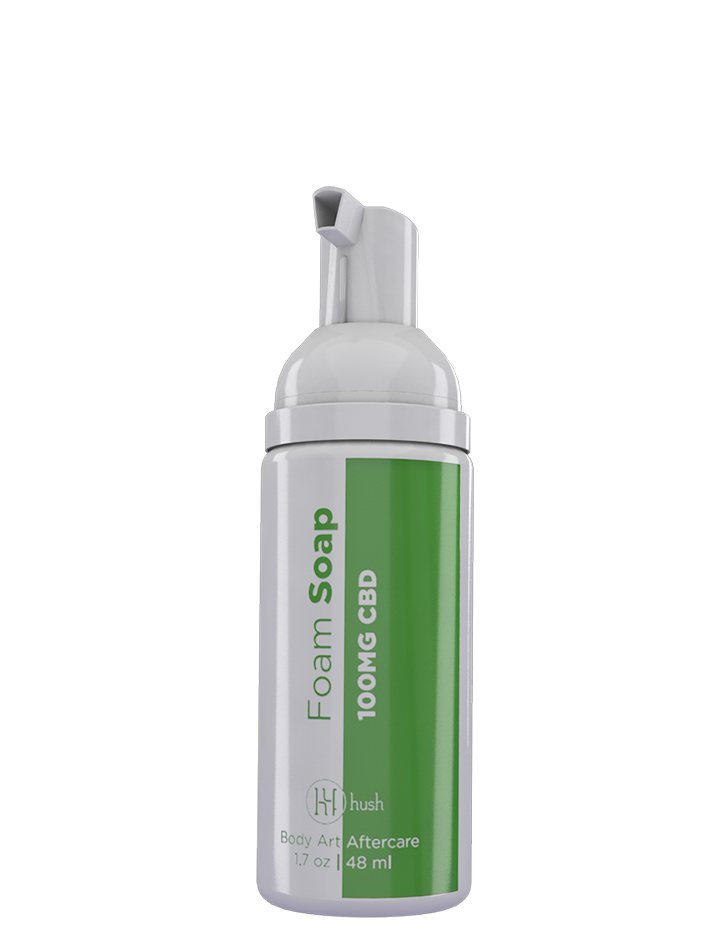
$45.99
Tattoo transfer paper is an invaluable tool, provided you know how to use tattoo transfer paper correctly. The perfect guidelines will make a tattoo easy to replicate, saving a lot of time and effort and leaving a client stoked with their gorgeous new piece that looks exactly how they imagined it would.
If you don’t know how to use tattoo transfer paper correctly, here’s how to fine-tune your technique.
What Is Tattoo Transfer Paper?
Tattoo transfer paper is paper that acts as a stencil for a tattoo. The paper is saturated with a special transfer dye or natural carbon, and it’s protected by a thin brown sheet.
When you remove the protective sheet and apply pressure to the saturated paper, it leaves an imprint of every line you draw. On the back of your drawing is a perfect stencil of every movement you made with your pen.
Tattoos are already designed before a session. When everyone agrees on the size and design, tattoo transfer paper can be used to perfectly replicate the lines and important details of the design in the exact spot where the tattoo is supposed to go. Think of it like a temporary dry run for the finished product.
Why Use Tattoo Transfer Paper?
A tattoo is seriously permanent. It’s better not to take any chances with a freehanded design that may not turn out how everyone wants it to.
Tattoo transfer paper allows you to place an exact copy of a finalized design precisely in the spot where a tattoo is going to go. There’s very little room for error.
Tattoo transfer paper also helps a client get a good idea of what a tattoo will look like before the tattoo process officially begins. You won’t have anyone getting cold feet mid-session or deciding that they don’t like the sizing or placement.
They can give the green light to a temporary replica and ask for changes if they’re not sold on the transfer. It’s a “last call” situation that you don’t want to skip.
What Happens If You Use Tattoo Transfer Paper Wrong?
If you use tattoo transfer paper the wrong way, a bunch of things can go askew. The worst thing is an incorrect stencil that affects the outcome of a tattoo.
If you trace the design the wrong way or forget to trace important details, you may not be able to get a do-over if you don’t notice until you’re halfway through the tattoo. That’s why you need to triple-check every transfer before, during, and after application.
You may also encounter the frustration of not being able to get a tattoo stencil to transfer correctly. If you don’t get it right the first time, you may need to start over again. It can be frustrating, especially when you have a client waiting to get started.
How To Use Tattoo Transfer Paper Correctly

Tattoo transfer paper isn’t hard to use if you’re willing to be slow, steady, and patient. If you don’t have much experience, practice making mock stencils to place on yourself or a fellow tattoo artist. Learning among friends is better than in real-time on a paying client.
Nail the Design
You need to be sure that the client is totally in love with the design and the size of the tattoo before you create the stencil. If they want to make any last-minute changes, it’s better to make those adjustments before you begin the process of creating the transfer.
Trace Accurately
This process is exactly the same as transferring a drawing onto a canvas. In many ways, that’s exactly what you’re doing. You need to trace the design with steady, even pressure.
Using a pen that’s a different color from the tattoo design will allow you to keep track of the lines you’ve already traced. Push down firmly and avoid making several passes over the same area. If you do, you might wear through the paper and damage the transfer.
Cut It Out
It’s hard to accurately place a transfer when you have a lot of blank space. You need to cut the transfer down to a size and shape that will make it easy to place correctly.
Leave yourself enough blank space around the edges so you’ll have room to hold the transfer without touching the back.
Prep the Area
Tattoo stencils transfer best onto an area that’s been freshly prepped. If you prep it and wait, the area might come into contact with oils or moisture, making the transfer process difficult.
If you dry the skin out and wait around, the sebaceous glands may begin to produce more oil in the meantime. Stay ahead of it.
Make sure the area has been shaved down (if necessary), sanitized with alcohol, and thoroughly dried before you apply a thin layer of stencil solution. Your client will only need to sit tight for a moment if you’re ready to apply the stencil right away.
Remove the Stencil Carefully
One of the biggest mistakes people make when removing the sheet from the transfer paper is touching the back. If you touch the back of the stencil, you’ll rub some of the transfer away.
Give yourself enough empty space to gently lift the stencil off. When you hold it, only touch the blank space. Don’t let the transfer side come into contact with anything other than the client’s skin in the prepped area — slow and steady.
Place and Press
Line up the transfer with the area of your client’s body where they want their tattoo placed. Take your time to make sure the placement is accurate and even. When you’re sure everything is lined up correctly, press on the stencil starting from the top and slowly work your way down.
Give it a good rub to ensure it’s flat and even and that the entire stencil has transferred. Grasp the upper corner of the paper and slowly peel it down to reveal the transferred stencil underneath.
What if the Transfer Doesn't Come Out Right?
If the stencil doesn’t transfer correctly or your client changes their mind about something major, you’ll have to remove it and start again. This includes re-prepping the skin with green soap or tattoo foam soap to remove oils, soaps, or residue from the product you used to remove the stencil.
What if I Nail the Stencil?

If you nail the stencil, you can go ahead and start the tattoo. The stencil will dry down while you’re setting up your station. It only takes a few minutes for the transfer to set. Follow your guidelines, wrap your client up, and send them home with a great tattoo aftercare kit.
It Might Be a Little Tricky, but You'll Get the Hang of It
Don’t be intimidated by tattoo transfer paper. It’s one of the most valuable tools you have as an artist.
It will save you so much time and effort, especially if you’re dealing with a client who isn’t sure about the size or placement of their tattoo. Give it a few practice runs before you use it with your clients. You'll never do it any other way once you have it down to a science.
Sources:
The Carbon Cycle | NASA Earth Observatory
How to transfer drawing to the canvas | Oil Painting Techniques
Sebaceous Glands: Function, Location & Secretion | Cleveland Clinic





